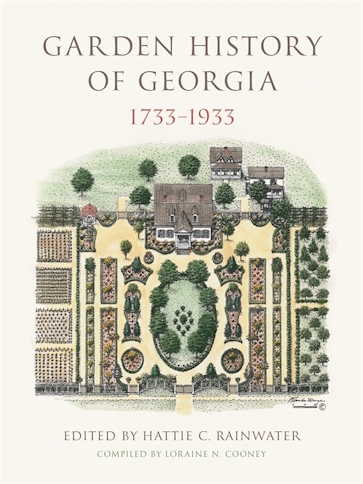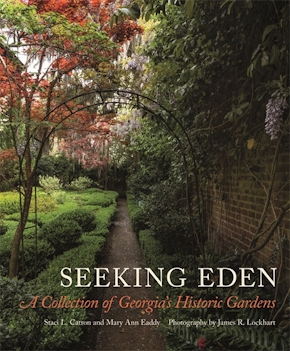Garden History of Georgia, 1733–1933
Title Details
Pages: 480
Illustrations: 433 b&w images
Trim size: 9.000in x 12.000in
Formats
Hardcover
Pub Date: 04/15/2018
ISBN: 9-780-8203-5301-2
List Price: $62.95
Subsidies and Partnerships
Published with the generous support of Mildred Miller Fort Foundation, Inc.
Garden History of Georgia, 1733–1933
Back in print—a comprehensive history of Georgia’s early gardens
Skip to
- Description
- Contributors
With the growth of the garden club movement in the South during the early years of the twentieth century, interest also developed in identifying and recording the region’s important gardens and landscapes. In 1933 Atlanta’s Peachtree Garden Club produced Garden History of Georgia, 1733–1933 in recognition of the state’s bicentennial.
Part 1 of the book, “Georgia’s Early Gardens,” by Florence Marye, gives “a comprehensive record of gardening in Georgia from Oglethorpe’s day, 1733, to the most modern garden of 1933.” Part 2, one of seven publications produced in the South from 1923 to 1939 that surveyed statewide garden histories, documents “Modern Gardens” both formal and rustic throughout all the physiographic regions of the state. Part 3, “Garden Club Projects, Institutional Gardens, School Gardens and Campuses,” shows such impressive gardens as Atlanta’s West View Cemetery and the campuses of Oglethorpe University, Berry College, and the University of Georgia. Thoughtfully illustrated with period and historic photographs and garden plans, the survey is complemented by a genealogy of Georgia gardens and a summary of historic plants and planting styles.
Garden History of Georgia is a loving document of the gardening history of the state that covers well-known public gardens such as Barnsley Gardens in Bartow County and the Andrew Low House in Savannah, while offering a look at some of Georgia’s most impressive private gardens. Distinguished by their variety, the Georgia gardens documented here span just over two hundred years. These homes and gardens still resonate with the modern viewer because they represent the people who created them, their relationship with the natural environment, and a tradition of cultural expression that continues today.
Florence Marye
P. Thornton Marye



